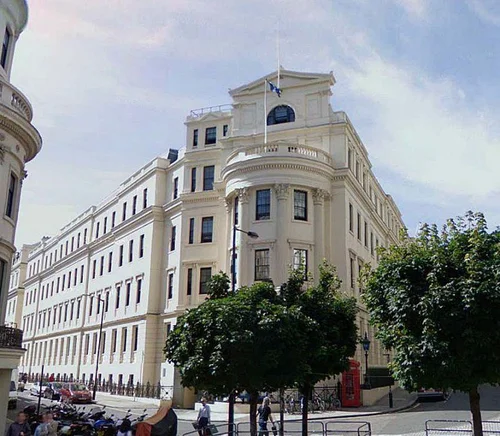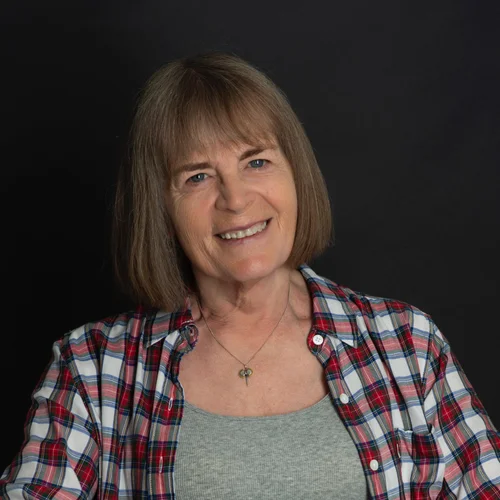Giving evidence to the Women and Equalities Committee on 8 September 2015, Dr John Dean authoritatively summarised the genesis of gender identity clinics [GICs]:
“there is quite considerable diversity of opinion between different clinicians and different clinics. All seven gender clinics in England arose out of the special interest of an individual a long time in the past. There has not been a lot of planning of their development, and there certainly is no training pathway for medical practitioners or others who work in this field.” [1]
Who were these individuals ‘a long time in the past’, how did they come to define the lives of trans people, and why are GICs such a focus of criticism from the patients they exist to serve?
In the beginning…

Our inquiry starts with the first medical definition of being trans, in 1886 by Austrian sexologist Richard von Krafft-Ebing who described ‘metamorphosis sexualis without paranoia’, which he understood as an intersex condition. His influential book, Psychopathia Sexualis, provided a Typical Patient Narrative – the patient history that forms diagnostic criteria – that supported trans affirmative care for a generation of trans people. This was assisted by the emergent discipline of endocrinology, and what we know as hormone replacement therapy, in the early twentieth century. Laboratories across Europe were developing new preparations, so that as I relate in The Hidden Case of Ewan Forbes, in the 1920s young aristocratic trans man Ewan was a guinea pig for experimental testosterone in Austria, Germany, Hungary, Czechoslovakia, and Paris.
In this period, we also find the first GIC: Magnus Hirschfeld’s groundbreaking Institute of Sexual Sciences, opened in 1919 in Berlin, providing affirmative healthcare, including reconstructive surgery, to trans men and women. But Hirschfeld’s Institute was short-lived: on 6 May 1933 Nazis destroyed it, burned its books, and sent its patients to death camps.
Before the Flood

It would be thirty years before another attempt was made to centralise medical services for trans people. For the next few decades, it was a question of seeking out the few clinicians who would provide affirmative care. In the UK, this meant finding your way to endocrinologist Joseph Adler and surgeon Lennox Broster at Charing Cross Hospital in London, or to the innovative plastic surgeon Sir Harold Gillies at Basingstoke, or to one of the so-called ‘Westendocrinologists’ who practised in Harley Street. During this period, being trans continued to be classified as an intersex condition, and it was usual for UK trans people to self-identify, receive affirmative medical care, correct their birth certificates, and live in complete equality. But things began to change in the 1950s.
As Joanne Meyerowitz describes in her important book How Sex Changed, US trans people who consulted psychiatrists met with chilling hostility. However, endocrinologist Harry Benjamin, who had worked closely with Magnus Hirschfeld, offered a supportive care pathway. He was Christine Jorgensen’s doctor and from 1952 onwards, the publicity surrounding her signposted scores of trans people to his practice. But Christine’s publicity, and that given to her UK contemporary Roberta Cowell, also generated extensive abusive press coverage. What should have been a private medical matter for individuals turned into a heated public debate and a focus for cultural insecurity. One anxious response to that angst was a new medical theory: gender identity.
In April 1954 an acrimonious medical debate burst out on both sides of the Atlantic, in the British Medical Journal and the American Journal of Psychotherapy. These were the opening shots in a turf war between psychiatry and endocrinology, with trans healthcare as the prize. Benjamin and Gillies were in their seventies and Broster was about to retire: they had little appetite for confrontation and psychiatry won the day. The idea developed in the US by psychologist John Money was that children were born with a ‘gender gate’, through which appropriate parenting would enable them to pass correctly, ensuring that they were neither gay nor trans. If the child was gay or trans then it was the parents’ fault and psychiatry would try to cure them.
In 1962, the first Gender Identity Research Clinic was opened at University of California, Los Angeles, to ‘cure’ gay men, lesbians, trans, and bi people with aversion techniques, ECT, psychotherapy, and frontal lobotomy. Where Hirschfeld’s clinic had celebrated and supported, thirty years later UCLA scare-mongered and suppressed. Its model was followed by New York and Toronto, including a patient pathway that began with conversion practices. Trans people whose ‘delusion’ persisted might be mollified with HRT and those who were persistent, insistent, and consistent in their ‘florid psychosis’ might be given reconstructive surgery – provided they ‘passed’ extremely well. In 1969, John Money and psychiatrist Richard Green imported this model to the UK and the NHS at the First International Symposium on Gender Identity, held at London’s Piccadilly Hotel.
Exodus

A new NHS regime was instituted: a centralised service at Charing Cross Hospital, presided over by psychiatrist John Randell, who viewed his role as being ‘to breed out of our genetic inheritance those with psychopathic and adverse genetic propensities . . . some form of eugenics, in fact’. [2] Patients were coerced into believing they were mentally ill, groomed into compliance with the GIC’s demands, blackmailed by reminders of their psychiatrist’s control over their future, and required to ‘consent’ to sterilisation. This non-consensual, no-choice regime was supported by a legal decision in 1970, Corbett v Corbett, which declared the late April Ashley and all other trans people mentally ill masqueraders. Trans people’s civil liberties were removed, without parliamentary debate or statute, and their voices were erased by media lampoon and attack. It is unspeakably distressing to recognise that historically, these three conditions of legal exclusion, biological elimination, and cultural obliteration meet the formal criteria of genocide, and that it was led by GICs.
There were few alternatives in this darkest period of trans history. Those with money could access private healthcare abroad, or through Harley Street, or through the few isolated practitioners who still operated trans affirmative care. New support groups, such as the Transsexual Action Group [TAG], the Transsexual Action Organisation [TAO] and the Self Help Association for Transsexuals [SHAFT] grew up to provide community help, to share experience, to train trans colleagues in how to survive the GIC system, and to signpost the most helpful (or least abusive) medical care available. Socially, trans people were utterly disempowered. No longer able to correct birth certificates, which operate as a proof of identity for employers and officials everywhere, their private medical history was instantly displayed if they sought employment in jobs with pensions or health insurance. Instant dismissal for being trans was legal, being sent to the wrong sex prison was legal, being refused any and every kind of service, affiliation, or entry was legal, and driving licences were secretly coded for the benefit of police and others ‘in the know’. Nothing changed until 1996.
The wilderness years
Meanwhile, the medical establishment consolidated its position. The International Symposium on Gender Identity continued to meet, and in 1977 it persuaded the World Health Organisation to adopt its definition of being trans as ‘sexual deviation centred around fixed beliefs that the overt bodily sex is wrong’. [3] In 1979 it reorganised into the Harry Benjamin International Gender Dysphoria Association and agreed a set of Standards of Care intended to protect its members from ‘legal, ethical, or moral scrutiny and liability’.[4] In 1980, ‘transsexualism’ became a new category in the American Psychiatric Association’s Diagnostic and Statistical Manual of Mental Disorders [DSM-III].
GICs now had absolute control of trans people’s lives, which they continued to exercise idiosyncratically, according to the personal preferences of individual psychiatrists. Some psychiatrists believed being trans arose from childhood psychodynamics, for others, it represented aberrant behavioural imprinting, while Freudians tended towards guilty sexuality. ‘Gender Identity’ was not a clinical specialty in the UK and so there was no agreed terminology, diagnostic criteria, care pathways, clinical standards, outcome measures or regulatory frameworks. GICs could simply do as they pleased to helpless patients. We do not know how many trans people survived this regime for they did not form part of the UK’s public health record.
The Promised Land?

A generation later, change arrived: a legal victory in the European Court of Justice in 1996 restored employment rights to trans people. Trans community groups focussing on legal and administrative change made rapid progress, so that in 2002, the UK government stated formally that being trans ‘is not a mental illness’. [5] But the 2004 Gender Recognition Act [GRA] was a set-back. Parliamentary debate leading to it indicated that sterilisation was a general expectation for granting trans people some limited civil liberties, and the GRA established an anonymous medico-legal panel to decide on applications, without meeting applicants. The process seemed to reinforce GICs’ unaccountability and incoherence and to support the mistreatment which was recorded in 2013 by thousands of tweets on #TransDocFail.

Today, NHS England’s new National Service Specifications for Gender Identity Services for Adults, which came into operation in 2019, prevents compulsory sterilisation. But it maintains trans psychopathologisation. Renamed Gender Dysphoria Clinics [GDCs] are still required to have ‘expertise in mental healthcare needs that are specific to individuals with gender dysphoria’. [6] Since these are not the general mental health needs that may attend anyone undergoing life-changing healthcare – anxiety, depression, stress – what can they be? And twenty years after government officially declared that being trans is not a mental illness, why is trans healthcare still located in NHS mental health trusts instead of in ordinary district general hospitals?
A century ago, trans people self-identified, received affirmative medical care from endocrinology and surgery, corrected their birth certificates and lived equally. From 1970 onwards, UK GICs removed autonomy, curtailed consent, and played a leading part in trans genocide. At the same moment, they asserted their innocence, positioning themselves as caring supporters of trans people. Psychiatry still dominates GICs and trans people still coach each other on how to survive it and get to the endocrinologists and surgeons whose skills they need. It is a system that is degrading to patients and the NHS alike, and long overdue for change.
References
[1] John Dean, ‘Oral Evidence: Transgender Equality Inquiry’, HC 390, Tuesday 8 September 2015. London: House of Commons, p. 9.
[2] John Randell, Sexual Variations (London: Priory Press, 1973) p. 146.
[3] World Health Organisation, International Classification of Diseases 1: 1 (Geneva: WHO, 1977), p. 197.
[4] Eli Coleman, ‘Toward Version 7 of the World Professional Association for Transgender Health’s Standards of Care’, International Journal of Transgenderism, 11:1, January – March 2009, pp. 1-7, p. 2.
[5] Department for Constitutional Affairs, Government Policy Concerning Transsexual People, July 2002. Now archived at https://web.archive.org/web/20080511211217/http://www.dca.gov.uk/constitution/transsex/policy.htm
[6] NHS England, Gender Identity Services for Adults (Non-Surgical Interventions), Service Specification No. 1719, September 2018.

You can buy The Hidden Case of Ewan Forbes :
– in print from Gay’s The Word bookshop
– as an audiobook (read by Rebecca Root)
– as an Ebook or on your Kindle

